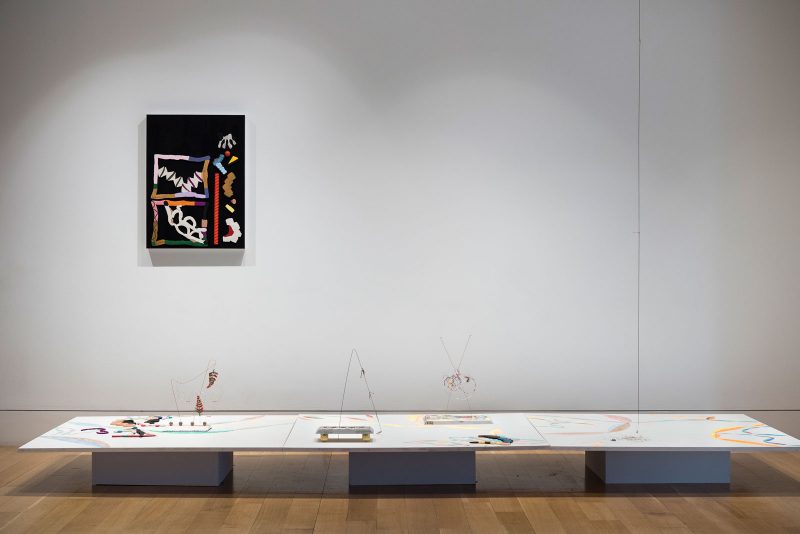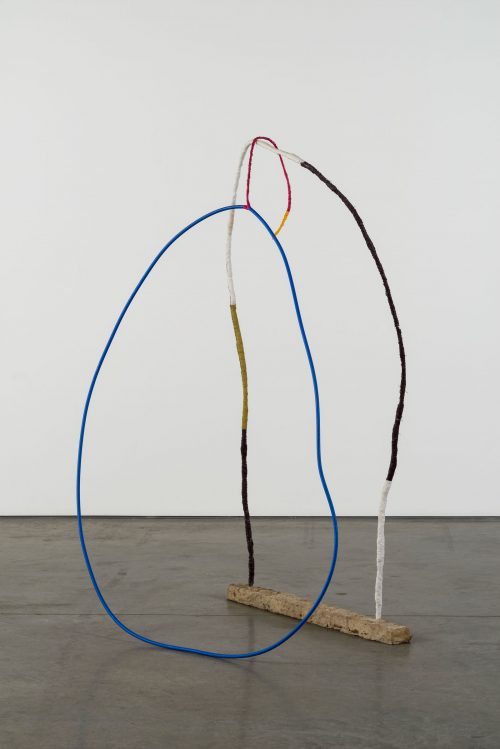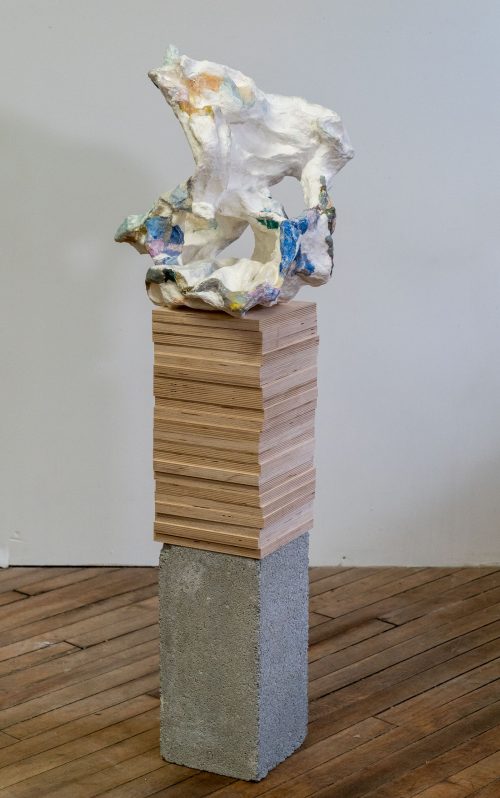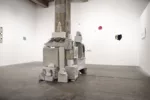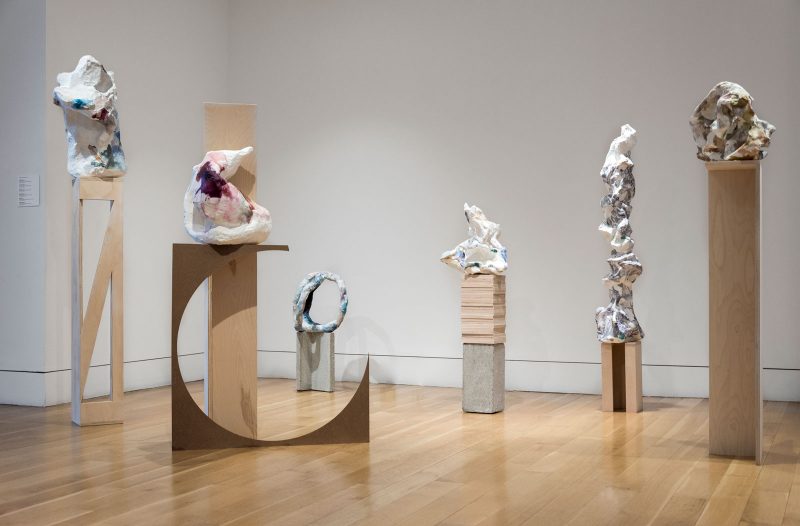
Artistic practice today often includes, in addition to teaching (especially if an adjunct), curating, exhibition design and installation, and writing as well. Alexis Granwell, an established artist who teaches at the Pennsylvania Academy of the Fine Arts and is a member of the artist-run collective Tiger Strikes Asteroid, fits within that category. Last summer she was asked to curate an exhibition for the second floor of the Hamilton Building at PAFA, and the brief was wide-open; she could choose to show her own work, that of students, alumni, or even those from the collection. Granwell made use of the opportunity to “mine” the collection and to combine it with her own sculptures and those of artists who she admires and follows. The result is Intimate Intensity, an exhibition that concentrates on materiality. For Granwell, this includes such characteristics as the sensual, touch, and the subversive.
She asked the critic and arts writer Bea Huff Hunter to write an accompanying essay, which is itself a creative document that eloquently explores the ideas and works in the exhibition. It is an unexpected text for a museum exhibition and fits well with the ethos of the works on display. Even though it was a lot to take on at the same time as teaching, Granwell finds that curating adds another dimension to her studio practice. For her, this was a positive and invigorating experience and one she hopes to repeat in the future; normally curating for TSA, Intimate Intensity was her first time doing so for an institution.
One of the greatest strengths of the exhibition is the opportunity for viewers to share a kind of intimacy with an artist, to look at the ideas and images that shape an artist’s imagination and to also see the context in which an artist places herself, both art historically and contemporarily. All the works are by women, even those from the PAFA collection, except for an editioned flax and kozo piece by the African artist El Anatsui. Most are sculptures by artists who live and work in New York City, and, who Granwell finds, have “helped me take liberties in my own work.”**
She considers the most exciting part of curating the dialog with other artists. The opportunity for careful study of the works through studio visits she believes forces her to think more intently about what these artists are doing and subsequently, about her visual language. Borrowing from the collection also permits her to engage with the different lineages for contemporary art important to her development and to open a conversation about this context. A recent large exhibition on Granwell’s mind was Revolution in the Making: Abstract Sculpture by Women, 1947 – 2016 (Hauser and Wirth). While organizing the PAFA show, she was thinking a lot about history, especially that of women in sculpture.
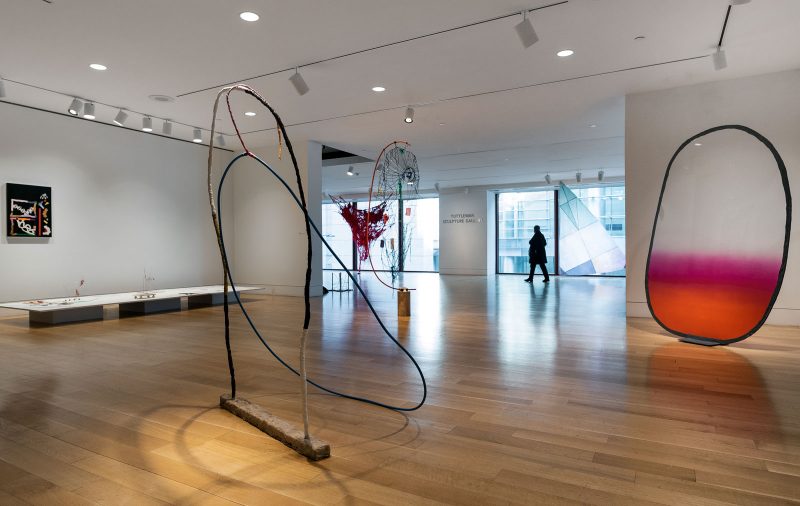
A challenge is the gallery, which has a cut-threw in the middle. Granwell decided to build on what she saw as the poetry of the space rather than dwell on a problem, and she was instrumental in the layout and installation of the show. Taking advantage of both the open areas and the running wall feet, she clearly thought very carefully about placement. There is often a dialog between works that are near each other, and the long views are poetic, matching her interpretation of the gallery space.
Granwell describes the chosen works for Intimate Immensity as having power, boldness, and humbleness. She sees the materials as invoking empathy in the viewer, commenting that “the artists are so fierce and so brave with the materials, but they don’t hit you over the head with it.” She also sees a dialog about the relationship between craft and sculpture taking place, stating that “many of the artists started out in painting but now make objects even if they still paint.” She believes it may be a material connection that she finds more often with women than men, and that is possibly why she is drawn to their work. However, Granwell believes there is more acceptance in the art world now for alternative processes. Certainly today, the border between craft and sculpture is fluid, amply demonstrated in this show.
Granwell’s own work references both craft and sculpture. The pieces are fragments, calling to mind classical sculpture. White with applied color, they suggest polychromed Greek statuary. The combined materials of paper, cement and wood make evident Granwell’s fascination with texture. Though common materials they result in sculptures that are elegant in form with highly individual personalities. Their grouping also recalls installations of modernist sculpture and fits the white space of the gallery. The bases are part of the whole and these too share a modernist language. Simultaneously historical and contemporary, craft and sculpture, they quietly engage viewers.
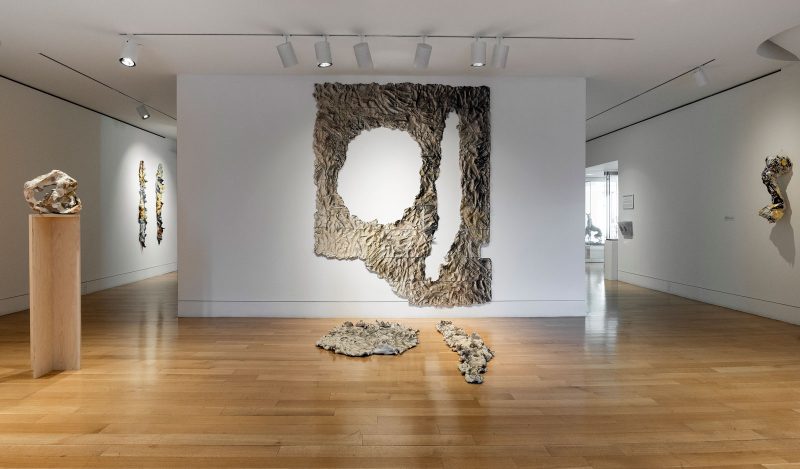
Other artists include Brie Ruais who creates huge ceramic works that look like the earth, deserts, and fossil beds. They are torn, ripped, smashed, and flattened individual pieces of clay that become complete upon installation together. Pigmented and glazed, their expressive power is not only in form and texture but also in color. They are quite painterly. There also are echoes of Peter Voulkos.
Fabienne Lasserre has five works on display. She experiments with materials, combining, for instance, steel, various types of paint, linen, and cardboard. Her forms resonate minimalism, but the various media and their application deny the perfection of that earlier style of sculpture.
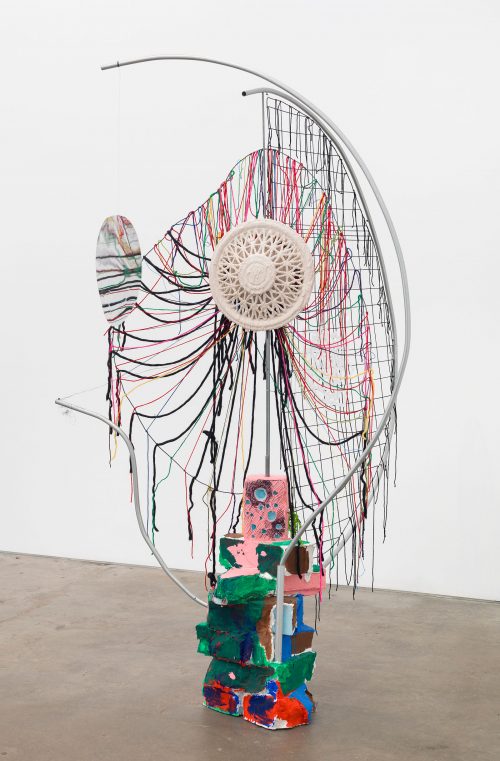
Two artists play with Alexander Calder’s legacy. Michelle Segre twists and bends wire into stabiles covered with brightly colored paint, yarn, and found and paper-mache constructed objects. They are whimsical and tactile, and wonderfully, neatly messy. Sun You’s “Broad Posting” comprises a platform with all manner of found and constructed elements accompanied by two wall panels. Think of Calder’s “Circus.” The surprise of unrelated materials and elements, such as false eyelashes, beads, and paper clips results in a charming and obsessive, but skillfully organized, installation. These works are compelling and confirm Granwell’s description of powerful and humble sculptures. Like Granwell’s own body of work, there too, here, is a historical and contemporary context.
Intimate Immensity, February 15, 2019 – April 07, 2019, School of Fine Arts Gallery, Samuel M.V. Hamilton Building, Pennsylvania Academy of the Fine Arts, 118-128 N. Broad St.
** All information and comments from Alexis Granwell were gained through a telephone Interview with her by the author on March 21, 2019.
Dr. J. Susan Isaacs is Professor of Art History at Towson University, where she teaches advanced undergraduate and graduate level courses in modern and contemporary art history and theory and is curator for the Holtzman and Center for the Arts Galleries. She was also the Adjunct Curator and Curator of Special Projects for the Delaware Contemporary (formerly the Delaware Center for the Contemporary Arts) from 2001—2016. She has organized shows for other contemporary art spaces and museums as well, including the galleries at the Gershman Y in Philadelphia. She publishes on contemporary art and artists.
More Photos
